Asante gold artefacts: Ghana rejoices as 'crown jewels' looted by British put on display
- Published
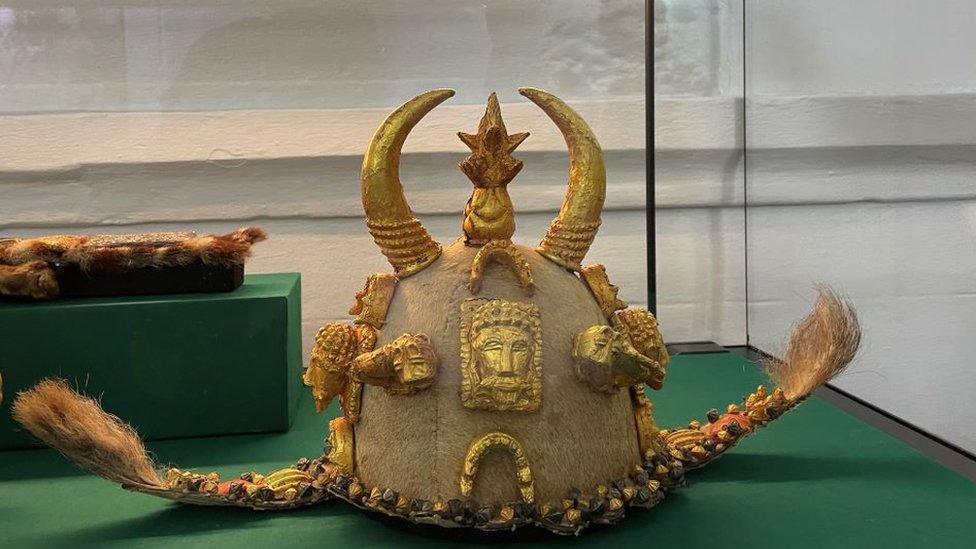
A ceremonial cap worn by courtiers at coronations is among the items now on display in Kumasi
Looted artefacts from the Asante kingdom are finally on display in Ghana, 150 years after British colonisers took them.
Ghanaians flocked to the Manhyia Palace Museum in Kumasi, the capital of Asante region, to welcome the 32 items home.
"This is a day for Asante. A day for the Black African continent. The spirit we share is back," said Asante King Otumfuo Osei Tutu II.
At this stage the items have only been loaned to Ghana for three years.
This loan can be extended, but only with the approval of the British culture secretary.
The agreement is between two British museums - the Victoria & Albert Museum (V&A) and British Museum - and the Asante king, not the Ghanaian government.
The Asante king, or Asantehene, is seen as a symbol of traditional authority, and is believed to be invested with the spirits of his predecessors. But his kingdom is now part of Ghana's modern democracy.
"Our dignity is restored," Henry Amankwaatia, a retired police commissioner and proud Asante, told the BBC, over the hum of jubilant drumming.
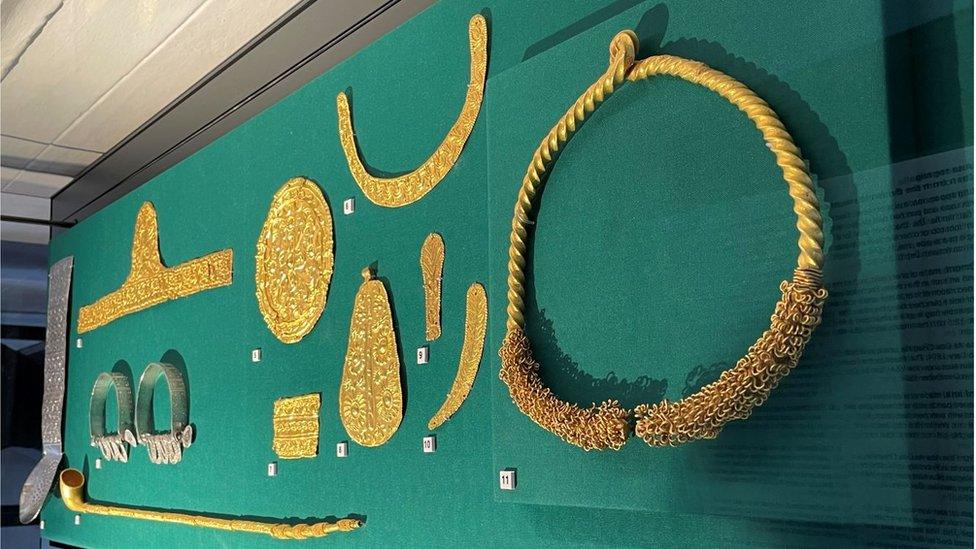
The neck ring or 'kanta' (R) was worn by the king at important funerals
The V&A is lending 17 pieces while 15 are from the British Museum.
The return of the artefacts coincides with the silver jubilee celebration of the Asantehene.
Some of the items, described by some as "Ghana's crown jewels" were looted during the Anglo-Ashanti wars of the 19th Century, including the famous Sagrenti War of 1874.
Other items like the gold harp (Sankuo) were given to a British diplomat in 1817.
"We acknowledge the very painful history surrounding the acquisition of these objects. A history tainted by the scars of imperial conflict and colonialism," said Dr Tristam Hunt, director of the Victoria and Albert Museum, who has travelled to Kumasi for the ceremony.
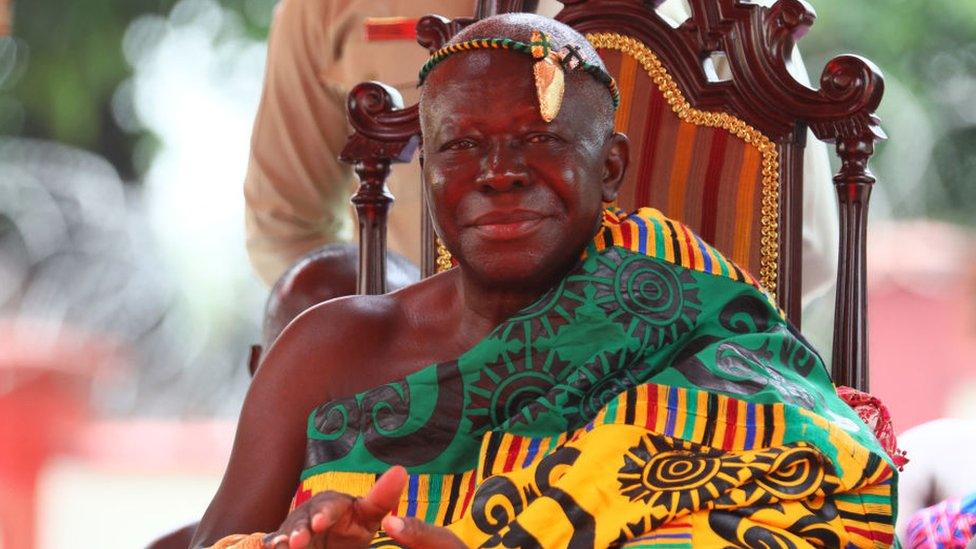
The display is part of the silver jubilee celebrations of Asante King Otumfo Osei Tutu II
Among the returned artefacts are the sword of state, gold peace pipe and gold badges worn by officials charged with cleansing the soul of the king.
"These treasures have borne witness to triumph and trials of the great kingdom and their return to Kumasi is testament to the power of cultural exchange and reconciliation," said Dr Hunt.
One of the returned items, the sword of state, also called the "mpompomsuo sword" holds great significance for the Asante people.
It serves as a sword of office that is used in swearing the oath of office to the kingdom by paramount chiefs and the king himself.
Royal historian Osei-Bonsu Safo-Kantanka told the BBC that when the items were taken from the Asante it took away "a portion of our heart, our feeling, our whole being".
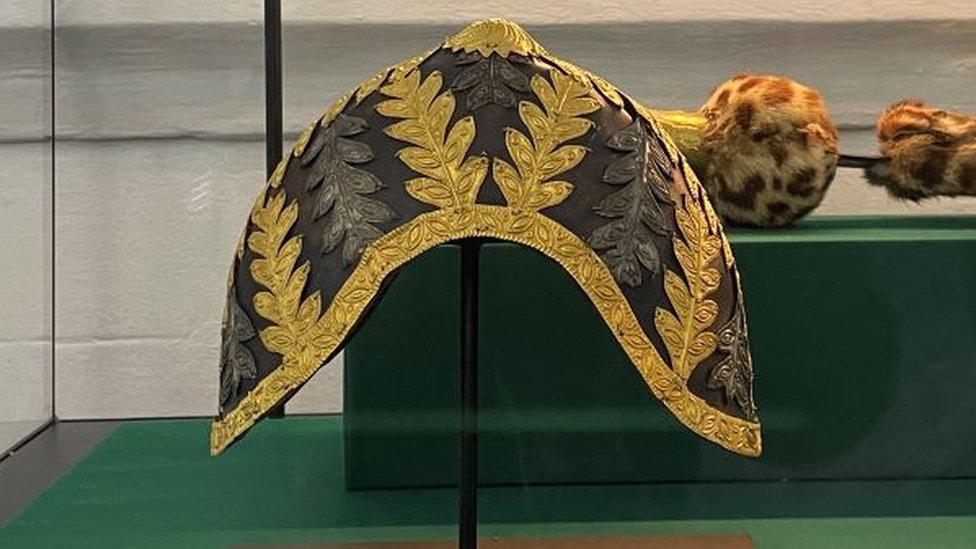
This gold headpiece known as "krononkye" was used when royalty was grieving
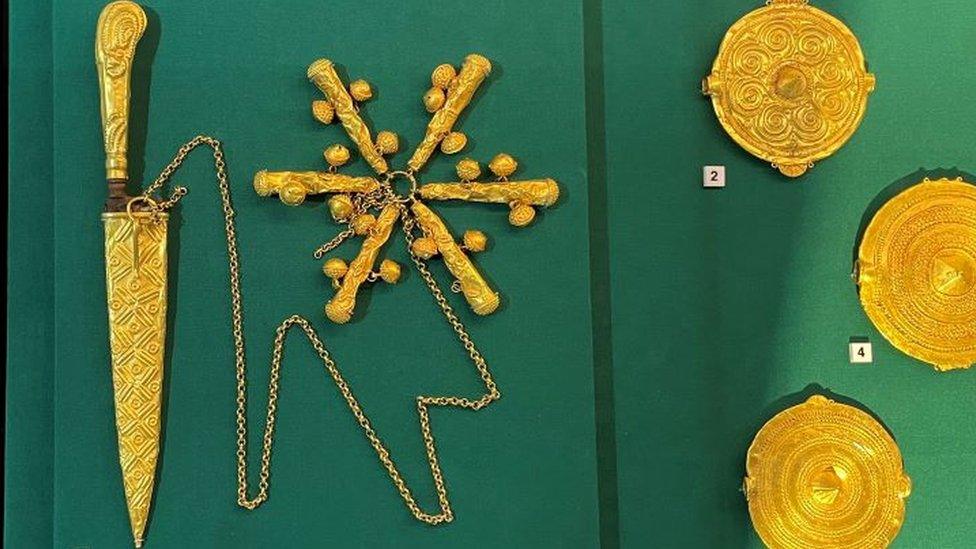
The midnight knife (L) was used for covert operations. The gold badges (R) were worn by the king's soul washers
The return of the artefacts is as controversial as it is significant.
Under UK law, national museums like the V&A and British Museum are banned from permanently giving back contested items in their collections, and loan deals such as this are seen as a way to allow objects to return to their countries of origin.
Some countries laying claim to disputed artefacts fear that loans may be used to imply they accept the UK's ownership.
Many Ghanaians feel the ornaments should remain permanently. However, this new arrangement is a way to overcome British legal restrictions.
African countries have repeatedly called for the return of looted items with some regaining ownership over precious historical artefacts in recent years.
In 2022 Germany gave back over 1,000 Benin Bronzes to Nigeria. The German foreign minister said at the time it was a step in dealing with a "dark colonial history".
You may also be interested in:
All pictures subject to copyright